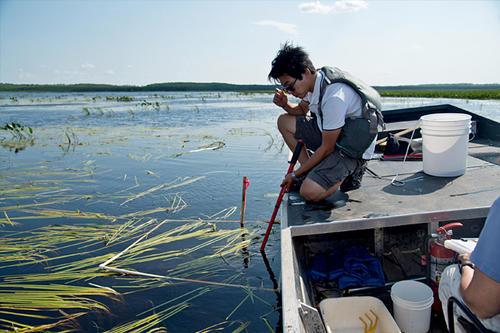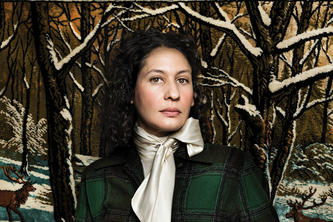
In northern Minnesota’s Big Rice Lake, the pickerel weed is doing fine. And it’s choking out the wild rice, relegating it to thin, scattered stands.
This bodes poorly for efforts to restore the lake’s rice beds. Yet in other lakes, restoration efforts go beautifully. Why the difference?
Plant ecologist Carol Reschke and environmental engineer Chanlan Chun, both researchers at the University of Minnesota Duluth’s Natural Resources Research Institute, want to find out.
In Big Rice Lake, “I assume the water level has been altered at some point, giving the pickerel weed an opportunity to get established,” says Reschke. Also, “wild rice has to produce seeds and start over each year, while the weeds have big root systems and just grow back.”
All lakes aren’t alike
Reschke and Chun are part of a team that’s in the second year of a three-year study at six sites—some with healthy wild rice stands, some with sparse. Graduate student Tyler Untiedt’s job (see video) is to gather sediment around root systems of both the competing plants and the wild rice plants at each site. The study will compare data on sediment chemistry, water quality, and microbial and plant life in lakes with sparse versus dense wild rice stands and share it with wild rice managers, state agencies, and the public.
“Wild rice is culturally significant, it’s Minnesota’s state grain, but it’s also ecologically important as food for wildlife and habitat,” says Chun. “We hope to find out why some of the restoration efforts worked, while others didn’t.”
- Categories:
- Agriculture and Environment




